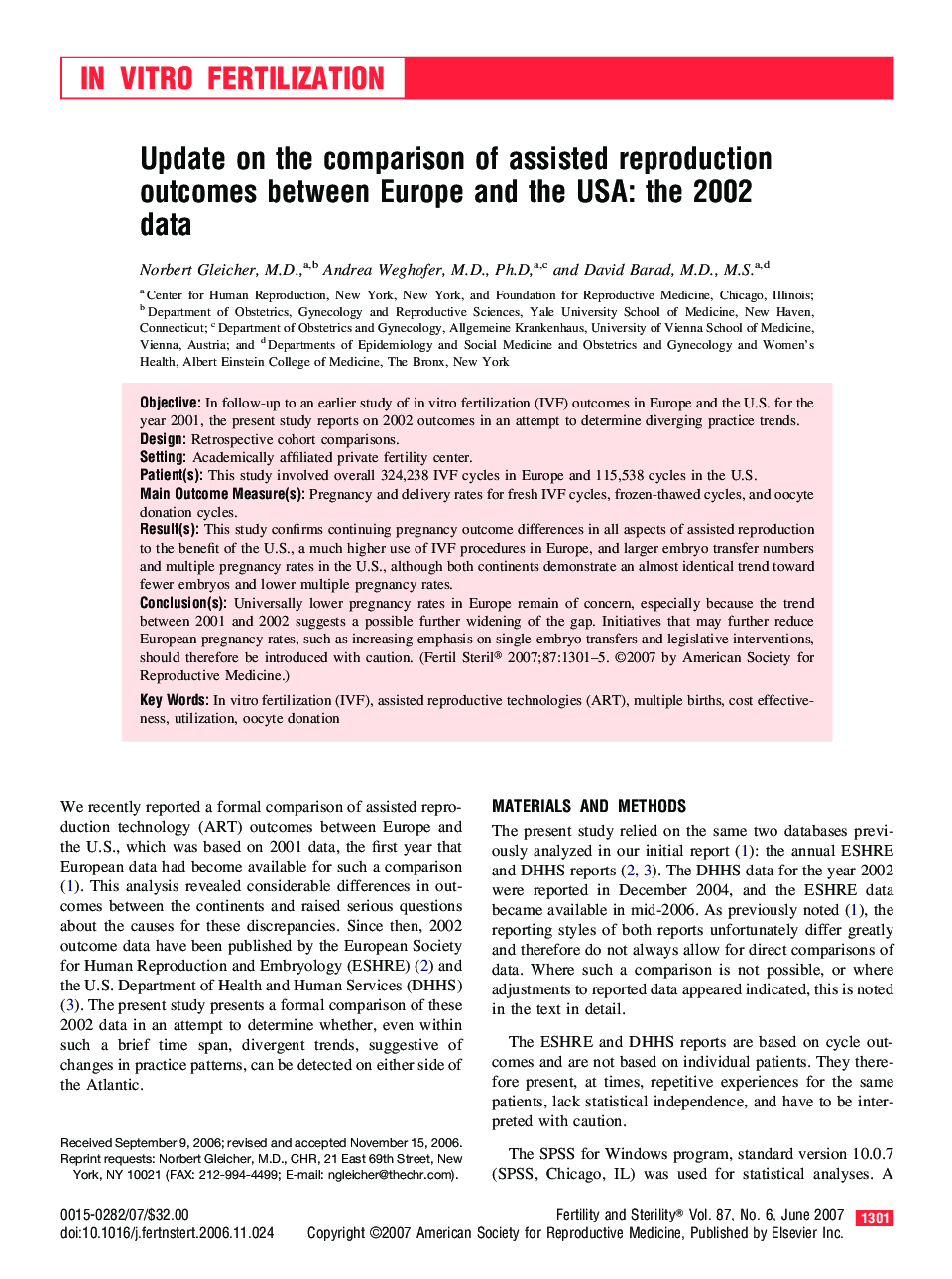| Article ID | Journal | Published Year | Pages | File Type |
|---|---|---|---|---|
| 3942002 | Fertility and Sterility | 2007 | 5 Pages |
ObjectiveIn follow-up to an earlier study of in vitro fertilization (IVF) outcomes in Europe and the U.S. for the year 2001, the present study reports on 2002 outcomes in an attempt to determine diverging practice trends.DesignRetrospective cohort comparisons.SettingAcademically affiliated private fertility center.Patient(s)This study involved overall 324,238 IVF cycles in Europe and 115,538 cycles in the U.S.Main Outcome Measure(s)Pregnancy and delivery rates for fresh IVF cycles, frozen-thawed cycles, and oocyte donation cycles.Result(s)This study confirms continuing pregnancy outcome differences in all aspects of assisted reproduction to the benefit of the U.S., a much higher use of IVF procedures in Europe, and larger embryo transfer numbers and multiple pregnancy rates in the U.S., although both continents demonstrate an almost identical trend toward fewer embryos and lower multiple pregnancy rates.Conclusion(s)Universally lower pregnancy rates in Europe remain of concern, especially because the trend between 2001 and 2002 suggests a possible further widening of the gap. Initiatives that may further reduce European pregnancy rates, such as increasing emphasis on single-embryo transfers and legislative interventions, should therefore be introduced with caution.
